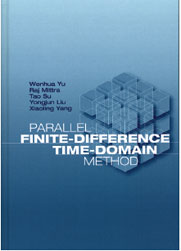Planar Microwave Engineering: A Practical Guide to Theory, Measurements and Circuits
Thomas H. Lee
Cambridge University Press • 880 pages; $80, £45
ISBN: 0-521-83526-7

This book is a response to the students, hobbyists and practicing engineers who have complained about the lack of a modern reference that balances theory and practice. Chapter 1 provides a short history of RF and microwave circuits. Chapter 2 introduces some definitions and basic concepts. Chapter 3 provides a brief introduction to the Smith chart and S-parameters. Chapter 4 presents a number of impedance matching methods. Chapter 5 surveys a number of popular connectors, their domain of applications and the proper way to take care of them. Chapter 6 examines the characteristics of lumped, passive elements at microwave frequencies. The most common way of building a microwave circuit, microstrip, is introduced in Chapter 7. Chapter 8 presents several methods for making impedance measurements, ranging from time-domain reflectometry to vector network analysis. Chapter 9 is devoted to microwave diodes. Chapter 10 builds on that foundation to describe numerous mixers. Since active circuits are more interesting, Chapter 11 presents a survey of transistors, providing a somewhat unified treatment of these transistors and focusing on just two types (MOSFETs and bipolars). Chapter 12 considers how to squeeze the most of whatever transistor technology is used. Chapter 13 shifts from broadband to low noise amplification and Chapter 14 describes the principles underlying noise figure measurements. Chapter 15 shows how to produce instability to build oscillators. Chapter 16 describes phase-locked loop synthesizers. Chapter 17 analyzes the important subject of phase noise while Chapter 18 describes phase noise measurement methods. Chapter 19 describes spectrum analyzers, oscilloscopes and probes. Chapter 20 presents numerous ways to implement power amplifiers. Chapter 21 is dedicated to antennas, while Chapters 22 and 23 focus on the design of passive filters.
To order this book, contact:
Cambridge University Press
100 Brook Hill Drive
West Nyack, NY 10994-2133 (845) 353-7500

Parallel Finite-difference Time-domain Method
Wenhua Yu, Raj Mittra, Tao Su, Yongjun Liu and Xiaoling Yang
Artech House • 270 pages; $119, £72
ISBN: 1-58053-085-3
Computational electromagnetics has found broad applications in scientific research and engineering. The finite-difference time-domain (FDTD) method is well suited for analyzing problems with complex geometrical features as well as those containing arbitrarily inhomogeneous materials, but the technique places a relatively heavy burden on computer resources. One approach to circumvent this problem is to resort to a parallel processing technique. The focus of this book is on parallel implementation of the FDTD method. To provide some necessary background on the FDTD method, the reader is referred to the existing literature, where details in the background material can be found. However, some code segments are included in both the C and Fortran programming languages that are designed to help the reader understand the structure of parallel code and the programming method on which the code is based. The book is divided in two parts. In the first part, Chapters 1 to 8, the basis concepts of the 3D Cartesian FDTD method are introduced, such as the boundary conditions, near-to-far field transformation and enhancements to the FDTD, which is followed by a discussion of the parallel implementation of the FDTD method. In the second part, Chapters 9 and 10, the basic concepts of the body of revolution (BOR) FDTD method are introduced. The topics of absorbing boundary condition, near-to-far-field transformation, singular boundary condition and simulation technique for the partially symmetric problem are discussed, followed by the parallel implementation of the BOR/FDTD method. Finally, two appendices introduce the basic routines pertaining to the MPI library, its installation, the configuration of this library and that of the MPICH, and how to set these up on a PC cluster.
To order this book, contact:
Artech House
685 Canton St.
Norwood, MA 02062
(781) 769-9750 ext. 4030; or 46 Gillingham St.
London SW1V 1HH, UK
+44 (0) 207-8750
